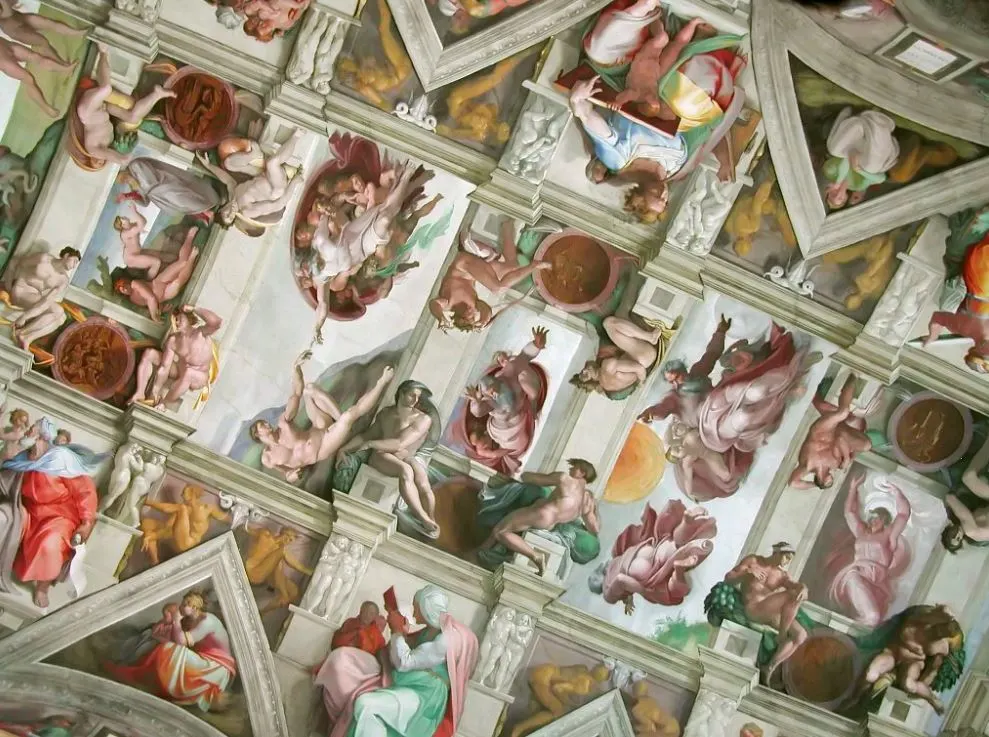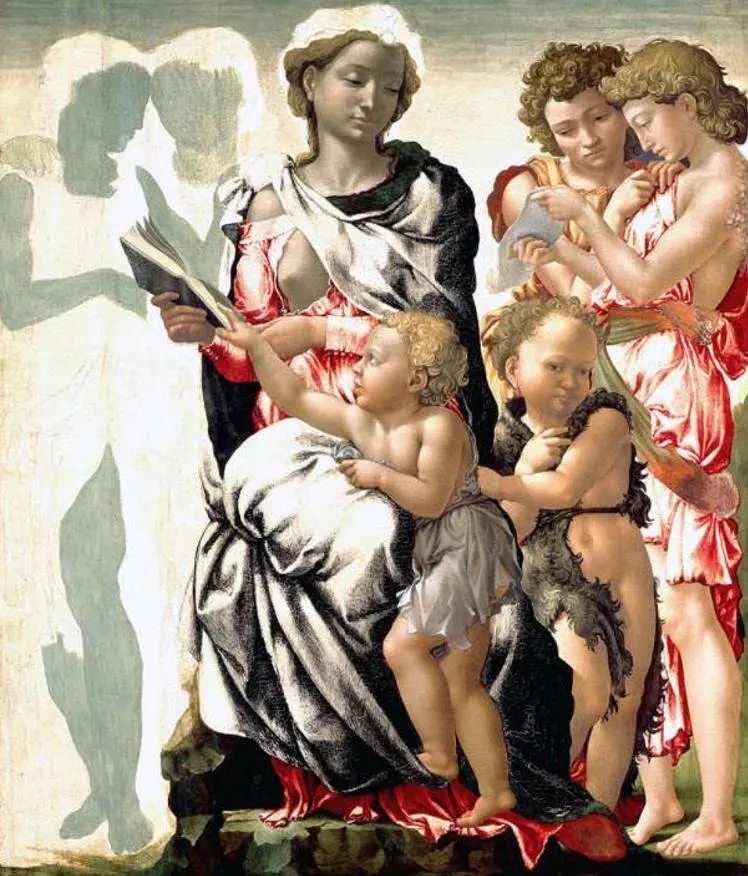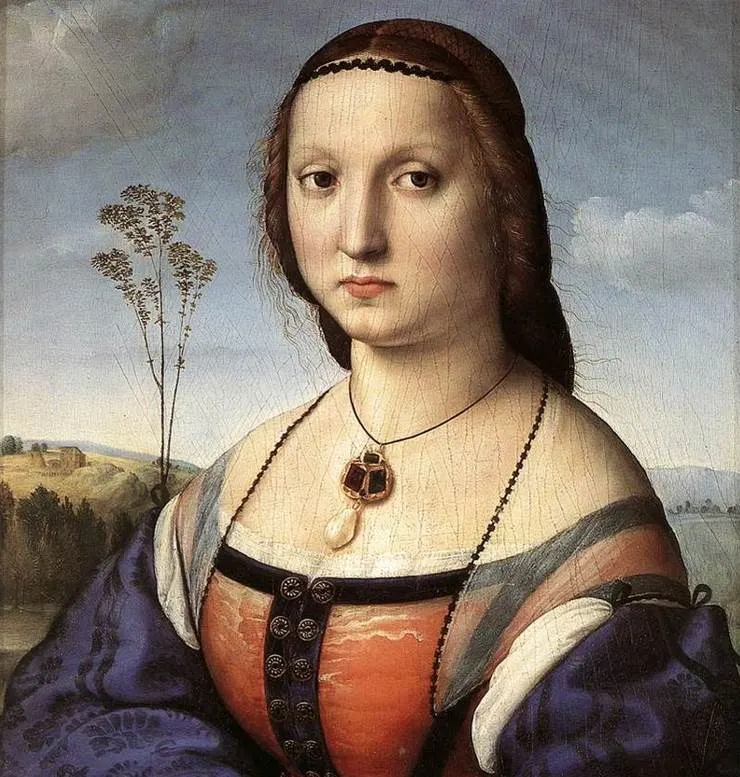The versatility of Michelangelo Buonarroti (1475-1564) knew no boundaries, something emphasized by the fact that he was one of the greatest sculptors, painters, and architects of the Renaissance.
He was, however, predominantly a sculptor, which makes it even more remarkable that many of this Renaissance genius’s most famous works include paintings.
In this article, you’ll discover some of the most interesting facts about the Doni Tondo, a unique work of art by Michelangelo for several reasons.
1. It was commissioned by a rich Florentine merchant for a special reason
The Doni Tondo by Michelangelo is an oil and tempera on-panel painting by Michelangelo, the famous polymath of the Renaissance period. Although it’s unclear when he completed the work, it certainly happened during the first decade of the 16th century.
The painting, which is also sometimes referred to as the “Doni Madonna,” was commissioned by a rich Florentine merchant named Agnolo Doni. He did so to commemorate his marriage to Maddalena Strozzi, the daughter of a powerful family in the Republic of Florence at the time.
We know exactly how the man looked in 1506 because this is the year that Raphael (1483-1520) completed his portrait, one of the many paintings by Raphael produced shortly before he departed for Rome.

2. The painting still resides in its original frame
One of the most remarkable facts about the Doni Tondo is that the painting still resides in the original frame, and this is not a simple one as well. It’s elaborately decorated and it’s assumed that Michelangelo himself had a hand in its design.
One of the most remarkable features of this frame is the protruding heads. This resembles the heads of the bronze doors of the Florence Baptistery which were designed by Lorenzo Ghiberti. Michelangelo once referred to these doors as the “Doors of Paradise.”
We know that the artist was a great fan of these doors but what the heads represent remains a mystery and has been extensively debated by art historians without a conclusive answer.

3. It depicts a scene featuring the Virgin Mary and her husband Joseph

The painting depicts the Virgin Mary and her husband Joseph as they are holding the baby Jesus Christ. Mary is sitting between the legs of Joseph and behind what appears to be a small wall we can also see the young John the Baptist.
These figures were popular subjects in art during the renaissance and especially Raphael and Leonardo da Vinci (1452-1519) often depicted them. Michelangelo was probably inspired by da Vinci’s painting called “The Virgin and Child with St. Anne” for the composition of this work.
The main figures are believed to present both family happiness and family values, something that makes sense for a painting commissioned to commemorate a wedding.
4. Nobody knows why the 5 nudes are in the background
Most of the Madonna paintings of this period are depicted with magnificent landscapes or architectural elements in the background. This makes it all the more surprising that Michelangelo decided to paint 5 nude male figures there.
They appear to be completely unrelated to the main figures and don’t directly look at them. They are hanging out on what appears to be another wall or ridge in front of a magnificent mountainous landscape.
Just like the protruding heads on the painting’s frame, the inclusion of these nude figures is shrouded in a mystery for which art historians haven’t found an answer yet.

5. It was painted in the same style as Michelangelo’s most famous fresco
If the distinctive use of color looks familiar, then that’s most probably because you already saw the most famous fresco ever painted by Michelangelo, that of the Sistine Chapel ceiling.
This incredible fresco was painted between 1508 and 1512 and includes one of the most iconic images in art history, “The Creation of Adam” in which God can be seen instilling life into Adam.
23 years after he completed the ceiling he also painted the altar wall of the Sistine Chapel, a painting called “The Last Judgement.” This controversial painting featuring countless nudes was completed between 1535 and 1541.
The Doni Tondo can be seen as a prelude in style to the Sistine Chapel as it’s pretty certain that it was painted shortly before he moved to Rome to complete this incredible work of art.

6. It’s a unique work of art in Michelangelo’s oeuvre for a particular reason
The Doni Tondo is a unique painting in the artist’s oeuvre because it’s considered to be the only completed panel painting of the mature artist.
He also painted the “Manchester Madonna” (1497) and “The Entombment” (1500-1501), both paintings in the collection of the National Gallery in London, but these works are unfinished.
What’s even more remarkable is that it’s also the only one of which the attribution Michelangelo hasn’t been questioned over the centuries.

7. How big is the Doni Tondo by Michelangelo
While Doni refers to the man who commissioned the painting, Tondo refers to the shape of the painting because “tondo” translates to “round” in Italian.
The artist didn’t complete a painting with a round shape for no reason. A round shape was associated with domestic values during the Renaissance, another reference to the upcoming marriage of Agnolo Doni to his rich wife Maddalena Strozzi.
This also means that we can only measure the painting by its diameter and it’s relatively big as well at 120 centimeters (47.5 inches).
After the marriage, Maddalena Strozzi became Maddalena Doni and Raphael was commissioned to paint her portrait as well, a painting that was completed in 1506.

8. Where is the painting located today?
If you want to admire the Doni Tondo then you have to head over to the birthplace of the Renaissance, the wonderful city of Florence in the Tuscany region of Italy. That’s because it’s part of the collection of the Uffizi Gallery, the most famous museum in the city.
If you want to take a closer look at the people behind the painting as well then you can do so at the Uffizi as well because the Portraits of Agnolo and Maddalena Doni are on display here as well.

